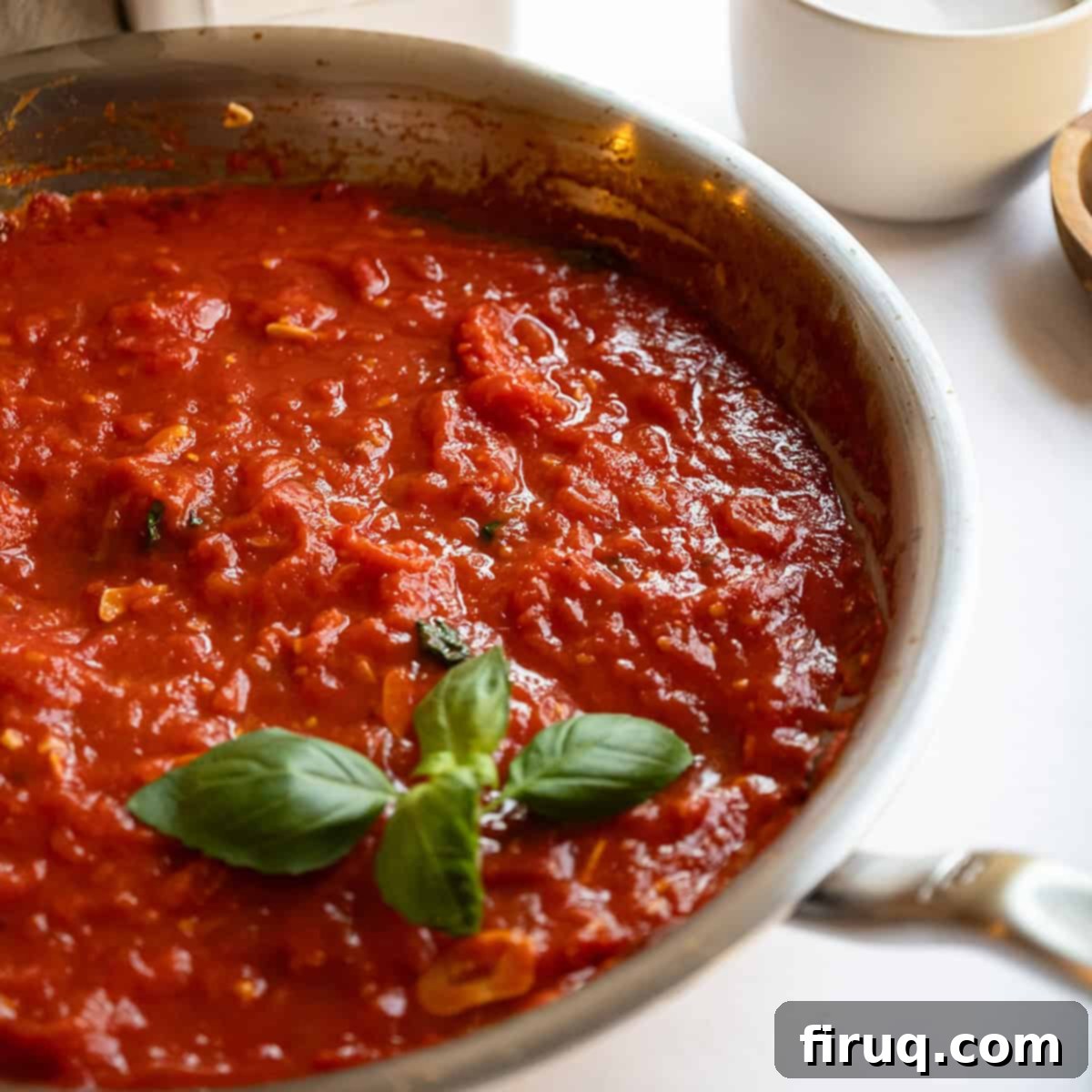The Ultimate Guide to Authentic Homemade Marinara Sauce: A Flavorful Italian Staple
Embark on a culinary journey to master the art of making the perfect **Marinara Sauce** from scratch. While simply sharing our “best” recipe would be easy, we believe true mastery comes from understanding each step and how it contributes to the unparalleled deliciousness of this Italian staple. With just a few simple ingredients and straightforward techniques, you can create a vibrant, flavorful marinara that will elevate any meal. This comprehensive guide will not only walk you through the process but also explain the “why” behind every choice, transforming you into a more confident and skilled home cook!
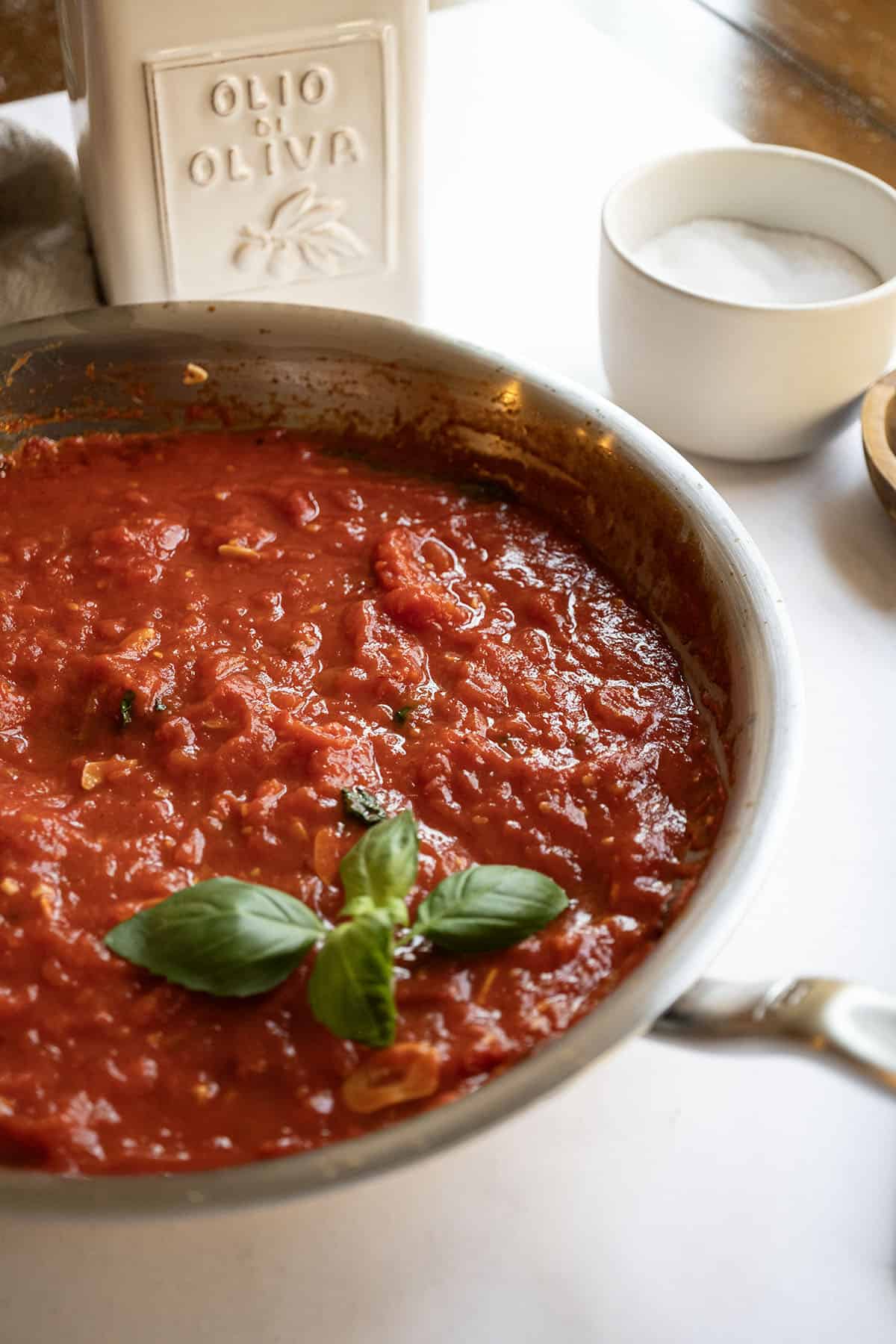
If you’re looking to explore more classic Italian flavors, be sure to check out our other beloved sauce recipes. Dive into the rich, slow-simmered goodness of our **Authentic Italian Sunday Sauce** or enjoy the bright, zesty notes of our **Creamy Lemon Sauce.** Each offers a unique taste of Italy, perfect for expanding your culinary repertoire!
What is Marinara Sauce? Unraveling an Italian Classic
Marinara sauce, at its heart, is a testament to the beauty of simplicity in Italian cuisine. This vibrant, intensely flavorful tomato sauce is cooked quickly, often in under 30 minutes, making it a perfect choice for weeknight meals. Traditionally meatless, it relies on a handful of high-quality ingredients to achieve its characteristic bright and fresh taste. It’s not just a sauce; it’s a fundamental building block for countless other Italian dishes, serving as the base for more complex creations like a rich Sunday Sauce or a hearty **Authentic Bolognese.**
The versatility of marinara is truly remarkable. It shines as a dipping sauce for warm, crusty bread, coats your favorite pasta perfectly, forms the savory foundation for a homemade pizza, or adds a burst of flavor to sandwiches like our delectable **Eggplant Parm Sandwich.** We proudly feature it in our **Better Than Olive Garden Eggplant Parmigiana** and alongside our **Classic Italian Fried Meatballs.**
While marinara is quintessential Italian, its origins are somewhat surprising. Tomatoes, native to the Americas, were not introduced to Italy until the 16th century. It wasn’t until later, likely in the bustling port cities of Sicily or Naples, that chefs began to incorporate this “new world” fruit into their cooking, eventually leading to the creation of marinara. The name “marinara” itself, meaning “mariner’s style,” is thought to refer to the sauce’s quick preparation, making it ideal for sailors and fishermen at sea, or perhaps its simple ingredients that were readily available to them.
This guide aims to go beyond just instructions; it’s a deep dive into the essence of marinara. You can find countless marinara recipes online, but our goal is to provide a comprehensive understanding of how the sauce develops its incredible flavor and the critical role each ingredient plays. By understanding these nuances, you’ll not only replicate our recipe but also gain the confidence to adapt and perfect your own homemade marinara, making it truly yours.
Ingredient Notes and Substitutions: The Foundation of Flavor
Crafting a truly exceptional marinara sauce begins with selecting the right ingredients. Because the recipe is so simple, the quality of each component is paramount. Here’s a closer look at what you’ll need and why these choices matter:
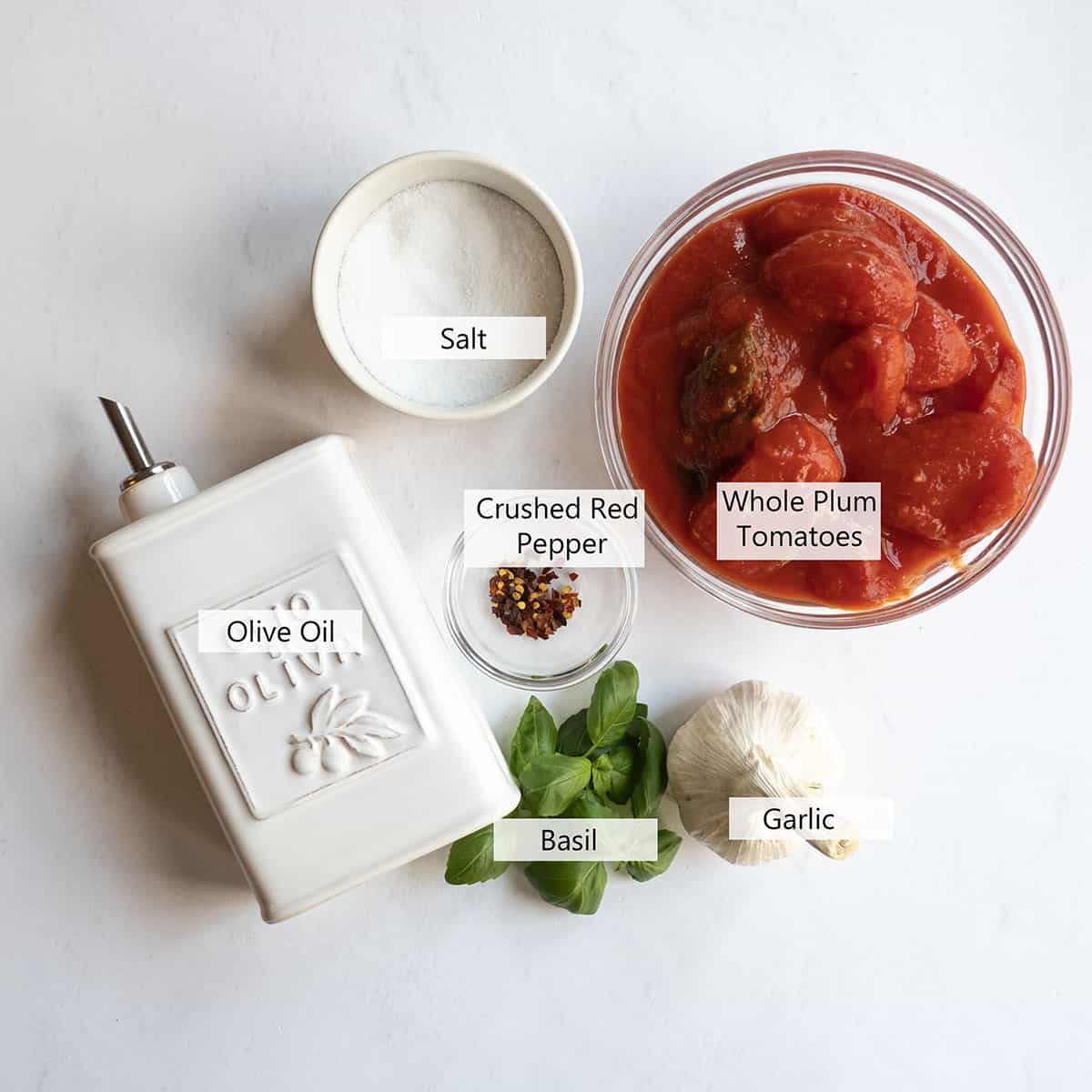
- Whole Plum Tomatoes: The Heart of the Sauce. Always opt for whole plum tomatoes. Varieties like San Marzano are renowned for their balance of sweetness and acidity, making them a top choice. However, other good quality canned whole plum tomatoes will also yield excellent results. The key is using whole tomatoes because allowing them to break down during simmering imparts a fresher, more robust flavor and a delightful texture that you simply can’t achieve with pre-crushed tomatoes. Crushed tomatoes often result in a thinner, less textured sauce.
- Fresh Basil, Not Dried: The Aromatic Finisher. This is non-negotiable for authentic marinara. Fresh basil offers a delicate, fragrant, and slightly sweet flavor that dried basil cannot replicate. Crucially, add it only at the very end of the cooking process. Basil’s essential oils are volatile; cooking it for too long diminishes its vibrant flavor and aroma. Adding it at the end ensures its bright, fresh notes burst through, perfectly complementing the tomatoes.
- Whole Garlic Cloves, Sliced: The Aromatic Foundation. Forget pre-minced garlic – it often has a metallic taste and lacks the potent freshness of whole cloves. Slice your own garlic thinly and evenly just before you’re ready to cook. Slicing rather than mincing allows the garlic to infuse the oil gently without burning, releasing its sweet, pungent aroma. The longer raw garlic sits exposed to air, the more intense and sometimes acrid its flavor can become due to enzyme activation, so precise timing is key.
- High-Quality Extra Virgin Olive Oil: The Unsung Hero. Since marinara uses so few ingredients, the olive oil plays a significant role in the overall flavor. Invest in a high-quality extra virgin olive oil, ideally one made from a single type of olive. This ensures a consistent, nuanced flavor profile that enhances, rather than overwhelms, the other ingredients. Good olive oil brings a fruity, peppery depth that is irreplaceable.
- Salt: The Flavor Enhancer. Salt is crucial for balancing and enhancing all the flavors in the sauce. Don’t be shy, but always taste as you go. Seasoning in stages allows you to adjust accurately. A common starting point is ½ teaspoon, but your palate is the ultimate judge.
- Crushed Red Pepper: A Hint of Zing. For a subtle warmth and a touch of complexity, a small pinch of crushed red pepper flakes sautéed with the garlic works wonders. The goal isn’t to make the sauce spicy, but rather to add a gentle zing that awakens the palate and complements the sweetness of the tomatoes.
*For precise measurements and detailed instructions, please refer to the recipe card below.
How to Make Marinara Sauce: A Step-by-Step Culinary Journey
Mastering a **staple** like homemade marinara sauce is incredibly empowering for any home cook. This recipe is designed to be so straightforward and quick that you’ll be able to prepare it at a moment’s notice. It’s perfect for those evenings when the fridge looks bare, but you still want to put a fresh, flavorful, and satisfying meal on the table. Let’s walk through the simple yet impactful steps to create this incredible sauce.

Step 1: Prepare the Garlic. Slice your garlic cloves thinly and uniformly. Avoid mincing or leaving them whole. Even slices ensure the garlic cooks evenly, releasing its aromatic oils without burning, which would result in a bitter taste.
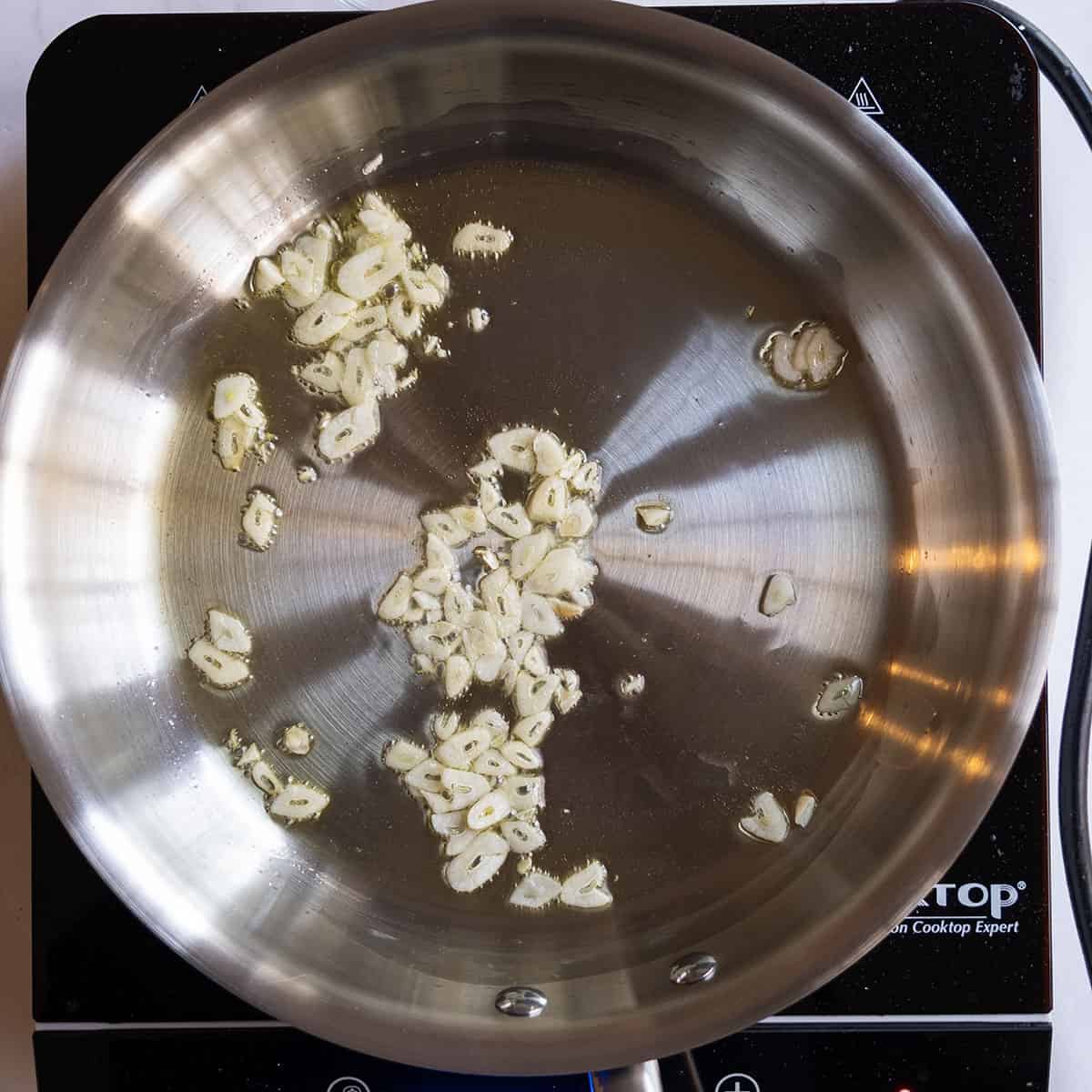
Step 2: Infuse the Olive Oil. Heat the high-quality extra virgin olive oil in a large sauce pan over medium heat. Once it shimmers (but not smokes), add the sliced garlic and stir constantly for about 1 minute. The goal is to gently toast the garlic, coaxing out its sweet, nutty flavor without letting it brown.
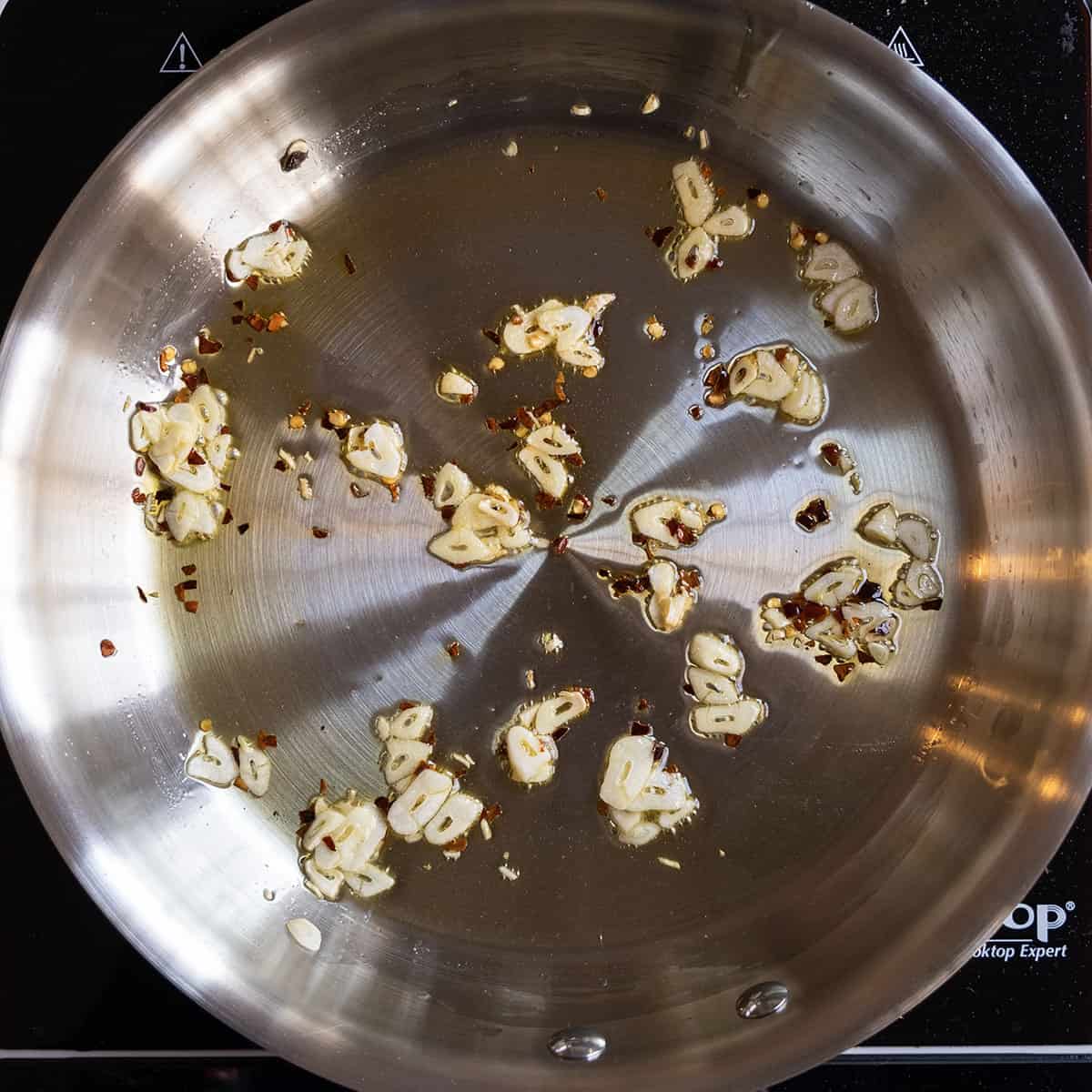
Step 3: Introduce the Red Pepper. Add the crushed red pepper flakes to the pan and continue stirring for another minute. This brief sautéing allows the pepper to release its subtle heat and fragrance into the infused olive oil, building a complex flavor base before the tomatoes are added.

Step 4: Add Tomatoes and Season. Carefully pour in the whole plum tomatoes. Using the back of a wooden spoon, gently break them apart. Add the salt, stirring to combine. Bring the sauce to a gentle simmer. This initial breaking helps kickstart the breakdown process, but don’t overwork them – the heat will do most of the job.

Step 5: Simmer and Develop Flavor. Allow the sauce to simmer for 30 minutes. Stir occasionally, and as the tomatoes soften from the heat, use your wooden spoon to continue breaking them down into your desired consistency. This gentle simmering melds the flavors beautifully and reduces the sauce slightly, intensifying its taste.

Step 6: Finish with Fresh Basil. In the last 5 minutes of simmering, add the fresh basil leaves. This ensures their vibrant aroma and flavor remain pronounced. Once the basil has wilted slightly and infused its essence, remove the sauce from the heat and prepare to serve this homemade delight with your favorite Italian dishes.
Embracing a fundamental recipe like marinara sauce is an excellent stepping stone to truly understanding and appreciating Italian cooking. This simple yet profound sauce forms the delicious base for an array of different recipes, such as our rich Creamy Red Pepper Sauce or the delightful **Italian Pink Sauce with Sausage!** Beyond serving as a foundation, marinara can simply be tossed with your favorite pasta for a quick and satisfying meal, or generously spooned over a creamy Classic Creamy Polenta for an elegant touch.
Pro-Tips for Your Best Homemade Marinara Sauce
Elevate your marinara from good to truly exceptional with these professional insights:
- Consistent Garlic Slicing is Key: Precision in slicing garlic isn’t just for aesthetics; it’s vital for even cooking. If slices are inconsistent, smaller pieces will burn while larger ones remain undercooked, leading to bitter or raw flavors. Evenly sliced garlic ensures a beautifully aromatic and sweet infusion into your olive oil.
- Crushed Red Pepper for Depth, Not Just Heat: The purpose of the crushed red pepper is to add a subtle “zing” and a layer of complexity to the sauce, enhancing the overall flavor profile without making it overtly spicy. A little goes a long way in waking up the palate and complementing the sweetness of the tomatoes.
- Let the Heat Work Its Magic on Tomatoes: When you add the whole plum tomatoes, you’ll naturally want to break them down. Use the back of your wooden spoon for an initial gentle crush, but trust the simmering process. The sustained heat will naturally soften the tomatoes, allowing them to break apart easily over time. This patient approach results in a richer, more integrated tomato flavor and a superior texture.
- Basil’s Grand Entrance: A Last-Minute Addition: Fresh basil is a delicate herb whose vibrant flavor and aroma are easily lost with prolonged cooking. To preserve its bright, fresh notes and allow them to shine through, always add basil leaves in the final 5 minutes of simmering. This ensures you capture the essence of fresh basil in every spoonful.
- Seasoning in Layers: Taste and Adjust: Salt is a crucial flavor enhancer. Don’t add all the salt at once; instead, season throughout the cooking process. Taste the sauce periodically and adjust the salt as needed. Tomatoes vary in acidity and sweetness, and your preference might differ. While ½ teaspoon is a good starting point, continuous tasting ensures a perfectly balanced sauce that suits your palate.
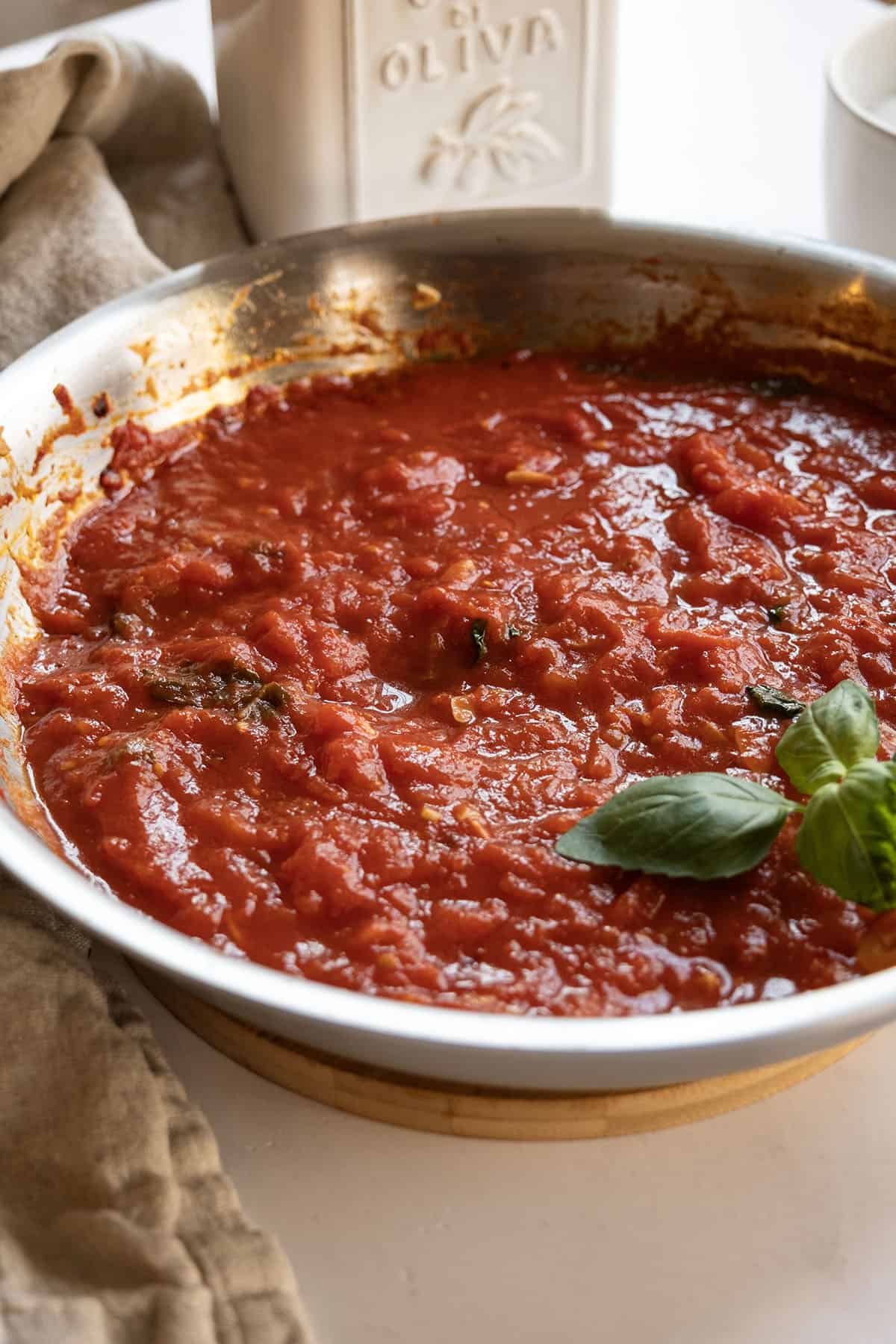
What to Serve with Your Versatile Marinara Sauce
Our homemade marinara sauce is incredibly versatile and forms the backbone of so many delicious meals. Its bright, fresh flavor pairs beautifully with a wide array of ingredients. Here are some of our absolute favorite combinations to inspire your next meal:
- Chicken: Marinara is a fantastic complement to chicken. Drizzle it generously over crispy **Italian Chicken Cutlets** for a quick and satisfying dinner, or incorporate it into our mouthwatering **Chicken Rollatini** recipe for a more elaborate dish.
- Pork: The rich flavor of pork finds a perfect partner in marinara. Elevate an **Italian Sausage and Peppers** sandwich by adding a generous dollop of this fresh sauce and some melted fresh mozzarella. It also creates a wonderful contrast when topping a savory **Classic Pork Chop Milanese** for an Italian-inspired meal.
- Beef: It’s no surprise that marinara is a match made in heaven for beef dishes. It pairs wonderfully with sausage, but truly shines when served alongside our **Classic Italian Fried Meatballs!** Whether you prefer to bake or fry your meatballs, a vibrant marinara sauce is essential. (Curious about the best cooking method? Read our guide on **Should you Bake or Fry Meatballs** for optimal results!)
- Pasta: Of course, marinara over any type of pasta is a timeless classic. It’s the easiest way to get a flavorful, satisfying dinner on the table in just 30 minutes. Simply toss with freshly cooked pasta, grate some Parmigiano-Reggiano over the top, and you have a complete, comforting meal that tastes like it took hours.
Recipe FAQs: Your Marinara Questions Answered
While some tomato sauces benefit from onion, traditional, quick marinara typically does not. Onion has a distinct, often overpowering flavor that can dominate the delicate balance of garlic, crushed red pepper, and fresh basil that defines an authentic marinara. The beauty of marinara lies in its simplicity and the brightness of its core ingredients. Adding onions would change its character, making it more akin to a different type of tomato sauce. Furthermore, many, including us, prefer a smooth sauce without loose chopped onions when served over pasta.
The term “spaghetti sauce” is quite generic and can be misleading. There’s no single definition; it often refers to any sauce served with spaghetti, or even store-bought, ready-made jarred sauces. Marinara sauce, however, is a very specific type of fresh Italian tomato sauce characterized by its quick preparation (under 30 minutes), use of simple ingredients (tomatoes, garlic, basil, olive oil), and bright, vibrant flavor. It’s a distinct culinary term, unlike the broad “spaghetti sauce.”
The difference between marinara and Sunday sauce is significant, primarily in their cooking time and flavor profiles. Marinara sauce is a “quick” sauce, cooked in about 30 minutes, resulting in a brighter, more pronounced tomato and herb flavor. Sunday sauce, on the other hand, is a deeply rich, complex sauce that is slow-braised over several hours. It typically includes various meats (like meatballs, sausage, and braciole) that simmer for an extended period, infusing the sauce with a more subtle, layered, and savory flavor. While marinara is often meatless, Sunday sauce always features meat as a central component.
Explore More Authentic Italian Sauces
If you loved mastering this essential marinara, you’ll surely enjoy diving into our other fantastic Italian sauce recipes. Expand your culinary skills and discover new favorite flavors:
- Creamy Lemon Sauce
- Creamy Red Pepper Sauce
- Authentic Italian Sunday Sauce
- Authentic Bolognese
We absolutely love hearing from our community! Please don’t hesitate to leave a comment and a star rating in the recipe card below. Your feedback means the world to us. And if you share your culinary creations on Instagram, feel free to tag us @vindelgiudice – we’d love to see what you’ve cooked!
📖 Recipe

The Best Marinara Sauce
Vincent DelGiudice
Pin Recipe
Equipment
-
1 large sauce pan
Ingredients
-
1 28 oz can whole plum tomatoes -
3 cloves garlic, sliced thin -
2 tablespoon extra virgin olive oil -
5 basil leaves -
½ teaspoon salt -
½ teaspoon crushed red pepper
Instructions
-
Add the olive oil to the pan on medium heat. Once hot, stir in the garlic for 1 minute. Then add the crushed red pepper and continue stirring for 1 more minute.
-
Pour in the whole plum tomatoes. Use a wooden spoon to lightly break them apart. Add the salt and bring to a simmer. Simmer for 30 minutes, stirring occasionally and using the wooden spoon to break up the tomatoes as they break down from the heat.
-
Add the basil leaves in the last 5 minutes of simmering. Remove from the heat and serve with pasta, eggplant, meatballs, or any of your favorite Italian classics.
Notes
- Slice garlic evenly so that it cooks at the same rate and doesn’t burn.
- Use the back of the wooden spoon to break apart the tomatoes. The heat will help break them down, so don’t worry too much about this in the beginning. Let the heat do its job.
- Basil goes in at the end. Basil flavor can disappear quickly when cooked so it’s best to add right before serving.
- Salt throughout the process by tasting occasionally to see if the sauce needs more salt. ½ teaspoon usually is plenty, but always taste to be certain.
Nutrition
Carbohydrates: 15g
Protein: 3g
Fat: 8g
Saturated Fat: 1g
Polyunsaturated Fat: 1g
Monounsaturated Fat: 5g
Sodium: 557mg
Potassium: 597mg
Fiber: 4g
Sugar: 9g
Vitamin A: 527IU
Vitamin C: 19mg
Calcium: 74mg
Iron: 3mg
Tried this recipe?We’d love for you to Leave a Review!
